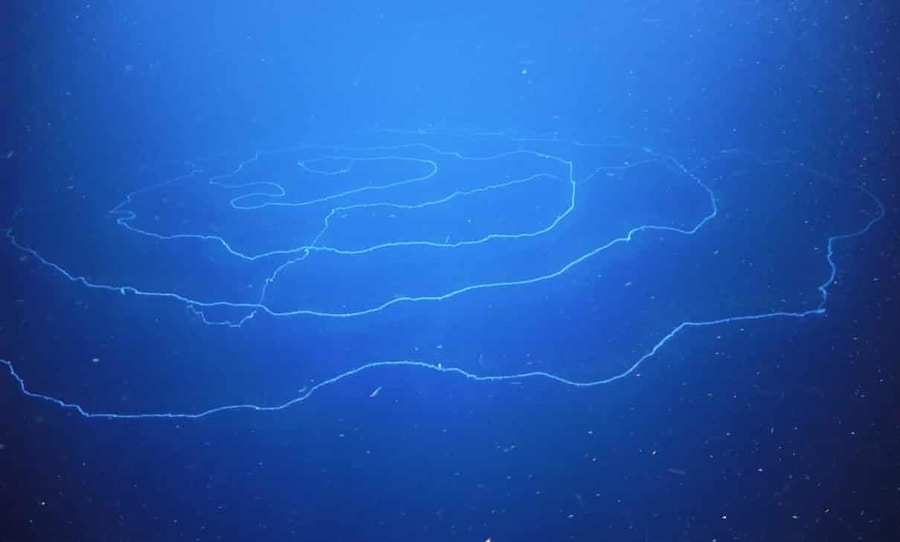Scientists have discovered a brand new animal species just off the coast of Australian. At least, they think it’s an animal.
Footage has been released of a long, string-like animal that seems to be something in-between organ and organism, managing to be both things at once. Many have just been calling it the “long stringy stingy thingy”.

Scientists have released footage of a long, string-like organism that was recently discovered off the coast of Australia. No one has ever seen anything like it.
Scientists were venturing into an unexplored area of the ocean when they came across the creature, as well as over 30 other new species. The area is just off the coast of Western Australia which means we’ve got a few more weird and wonderful wildlife to add to our list.
The creature is called a siphonophore and it’s about 46 metres long (twice as long as a blue whale, 3 times as long as a humpback whale). They are predators that are made up of a bunch of small clones that act as one animal. They’re also deep-sea animals. This one is supposedly the longest that scientists have found.
The deep-sea research vehicle dove 4,439 metres into the sea, though the siphonophore was discovered on the way back to the surface, at around 600 metres.
Check out this beautiful *giant* siphonophore Apolemia recorded on #NingalooCanyons expedition. It seems likely that this specimen is the largest ever recorded, and in strange UFO-like feeding posture. Thanks @Caseywdunn for info @wamuseum @GeoscienceAus @CurtinUni @Scripps_Ocean pic.twitter.com/QirkIWDu6S
— Schmidt Ocean (@SchmidtOcean) April 6, 2020
“Everyone was blown away when it came into view,” said Nerida Wilson, senior research scientist and leader of the expedition. “Most scientists had drifted out of the control room.”
“The word soon spread and people came pouring into the control room to share the excitement. It was just amazing to see this huge organism spread out like a spiral UFO, hovering in the water column. We couldn’t believe what we were seeing.”
Wilson added that months of research is yet to take place before scientists confirm that these organisms are in fact, truly unknown to us.
“We were definitely looking for and expecting new species. Those waters were just too unexplored to not yield such treasures.”
Some of the clones specialize in catching prey. Their slender bodies hang with a single long tentacle dangling like a hook-studded fishing line. Like the frilled tentacles of another siphonophore pictured below…
(pic: @SchmidtOcean https://t.co/UIJt6aLSNn) pic.twitter.com/7nDOKFqSUZ— Open Ocean Exploration (@RebeccaRHelm) April 6, 2020
Next Up: Seven new species of peacock spider discovered in Australia


